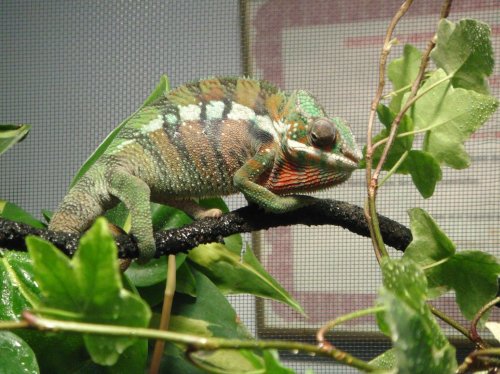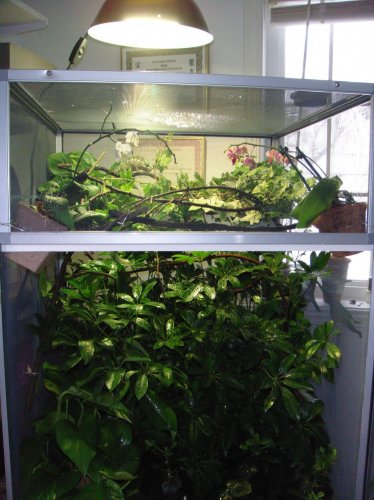Gianfranco
New Member
Hi everyone!
My first baby panther, who is almost 5 months old, arrived here 10 days ago. Since then I saw him eating some crickets and silkies a few times at the beginning , but during the last 5 days I don't think he has eaten a single bug.
I had started at the beginning with crickets in a cup but unsuccessfully, so I tried to let the bugs roam in the cage. The result is the discovery of a nice colony of crickets hidden in a orchid pot.
My breeder recommended to change the decoration of the cage, so Today I added way more vegetation so he has more spots to hide. He seams pleased but again I offered him a few crickets jumping in a cup almost right under his nose but he didn't show any interest......5 hours later they are still there!
I sincerely don't know what to do to make him eat.....
He has a big screen cage (24x24x48), full of vegetation and branches, a dripper, a habba mist system, a good light (megaray), good temp (28-30 at basking spot)........please help me with advices.
Thanks in advance.
Gf
My first baby panther, who is almost 5 months old, arrived here 10 days ago. Since then I saw him eating some crickets and silkies a few times at the beginning , but during the last 5 days I don't think he has eaten a single bug.
I had started at the beginning with crickets in a cup but unsuccessfully, so I tried to let the bugs roam in the cage. The result is the discovery of a nice colony of crickets hidden in a orchid pot.
My breeder recommended to change the decoration of the cage, so Today I added way more vegetation so he has more spots to hide. He seams pleased but again I offered him a few crickets jumping in a cup almost right under his nose but he didn't show any interest......5 hours later they are still there!
I sincerely don't know what to do to make him eat.....
He has a big screen cage (24x24x48), full of vegetation and branches, a dripper, a habba mist system, a good light (megaray), good temp (28-30 at basking spot)........please help me with advices.
Thanks in advance.
Gf






